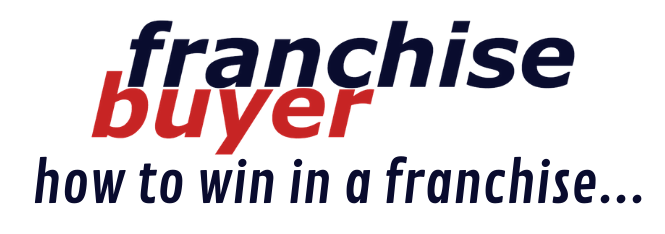March 14, 2022
Has Subway really closed 200+ stores in Australia? Here’s the real reason why.

I saw and took note recently in a mainstream media outlet (DailyMail) about Subway Australia closing ‘HUNDREDS of stores’ with speculation from a nutritionist and market commentator about their thoughts on why.
Nobody wants any small business to close, so my heart goes to any owner who has had to endure such a thing. But let's look at the reasons...
The ‘reasons’ for outlet closures
The article cites three (3) core reasons why they say outlets have closed for the brand.
- Changed food habits,
- The COVID pandemic,
- Competition.
The story was basically a cheap-shot for clicks, without looking at any substantive depth in the detail. You can read it HERE along with some additional salacious and irrelevant bits they like to tack on...
But, the REAL reason
Put more simply, I think they missed the core reason - I believe Subway arguably had too many stores in this market to start with.
The article states the brand had 1,444 locations in 2015, 1,353 in 2019, and down to the 1,242 today, and with 56 additional locations they currently found for sale.
If you do a basic calculation, it tells us that it had one store for every 17,000 people in Australia.
It’s also the point of scale that can help explain a reduction in size. A network the size of Subway enters into and exits literally hundreds of commercial leases according to the market conditions in front of it.
The reason for the closure of many of the 200+ stores over a 7 year period, from the size the brand was in the Australian market, is arguably more the result of location selections across the preceding 5 - 10 year period prior.
Those three (3) factors mentioned are still likely factors in the reduction of locations, but not the be all as suggested.
Although, I’m not as certain on the COVID one as I would have expected the chain to have been able to adapt more easily with minimal dine-in capacity already prior, and easier contact free capabilities and delivery options.
And I’m not sure in comparison to many other seemingly less healthy fast-food offers experiencing strong sales across the pandemic period, that a more ‘health-conscious’ consumer really stacks up as a rationale either.

The rule of 10% for re-sale in franchising
In franchise circles, we often refer to the rule of thumb of 10% when it comes to franchises for re-sale in the market.
If you have 300 stores for example, it’s pretty normal to expect that around 30, or 10% of them or so, would be on the market at any time, with the owners wishing to exit for all sorts of reasons.
That’s pretty normal.
A percentage significantly higher than that in a brand is widely considered a type of red flag requiring explanation, particularly on the part of a person looking to invest in that franchise.
As mentioned in the DailyMail article, they found 56 Subway stores currently for sale out of 1,242 locations. Now of course, there is likely more for sale in the market, but still, that number is sitting at under 5% on that measure.
Then, run that 10% rule of thumb across the 1,444 or so Subway stores they had in 2015, and add in all the ‘normal’ commercial changes you have in the market, like changes in demographics, leasing decisions and so on.
That 200+ stores closed in the Australian market is great for an attention grabbing headline story from a platform like the DailyMail, but ignores the realities of operation of a large-scale franchised business.
Multi-store owners taking the hit?
My memory of talking to people in the industry over the years is that Subway had a significant number of multi-store owners in the market. I recall people at times remarking how hard it was to get into a store within varying regions, as a small number of franchisees had secured many of the locations.
I wonder what the number of stores closed have been those owned by multi-store owners who have retained other locations.

Brands that grow to a significant volume of locations in franchising, also often have discussions of ‘cannibalisation’ around them. That is, stores placed too close together cannibalising the sales of each other.
Brands most often invest significant resources into territory mapping and financial modeling of locations to minimise the chances of location mistakes - but again, that large scale I referred to earlier comes into play.
There was a bit of chatter for a time over the years around concerns of cannibalisation in Subway locations, true or otherwise. But, I stress again, this is very often the case in any franchises that grow to a significant number of locations.
Having multi-store owners in a franchise network looking to expand aggressively, can be a strategy to manage such concerns.

Take a look at the Domino’s ‘fortressing’ strategy
Take a look at what Domino’s are doing right now in their ‘fortressing’ strategy. I wrote about it late last year HERE in some detail and what it means.
They are adding additional locations in ever-closer postcodes to reduce delivery times and ‘fortress’ their network from competition.
Having franchise owners secure multiple locations within a region encourages them to focus on the entire market opportunity, rather than stress about the sales of single location(s).
Perhaps the current Subway numbers are bringing the locations back to what was always a more suitable number in the Australian market?
Then, you overlay some changes in eating habits and increased competition, to give an even clearer picture.
Subway’s brand transformation
But in saying all that, there still appears to be a very firm place for the brand in the Australian market in my view from both a franchised and consumer perspective.
I have been seeing a lot of activity from the brand announcing their in-store refits across the market. I’m constantly seeing alerts for the announcement of another completed store refurbishment to bring the locations up to a modern, fresh look.
Revitalising the brand look and feel experienced by the consumer at store level, underpinned with sound operational and marketing strategy, always results in increased sales and foot traffic in my experience.
The brand certainly needed it with many stores looking pretty old and tired over the last few years.
We understand from the DailyMail article, that the brand has currently hit around the 35% mark of the network being refurbished. This is a great sign for the brand as this transformation rolls out.
Competition
We’ve seen sub-sandwich competitors come into the market, and quickly fall by the wayside.
Quiznos is the big one that people still mention in our market, but I think that is pointless and irrelevant in the current market as it was so long-gone, that can be set aside now.
We’ve recently seen two new sub-sandwich brands, Jersey Mikes and Jon Smith Subs try to enter the Australian market.
Unfortunately, we’ve seen both brands fail pretty quickly.
I had a Jersey Mikes close to my house, and it just seemed all wrong and had no clear enough point of difference that anyone cared enough about to compete with Subway.
We were invited to the opening launch of the Jon Smith Subs brand in Australia, with the first and only store opened at Docklands in Melbourne. I only very recently saw an announcement of its closure.
I very much feel for the lovely franchise partner and their team we visited and filmed back in early 2019.
But of course, Subway’s competition is not really about another sub chain. It’s more about other food offers in the market.
I think the brand is more than well enough placed to retain a more healthy food position in the market in comparison to many rivals - with a few tweaks to its offer. It can’t also be forgotten that its price point is also a strong value proposition.
In looking at the size of the network, and the brand transformation underway, I’d think that Subway is more than well placed to remain one of the largest food players in the space for a time to come, despite what certain headlines are trying to say…















